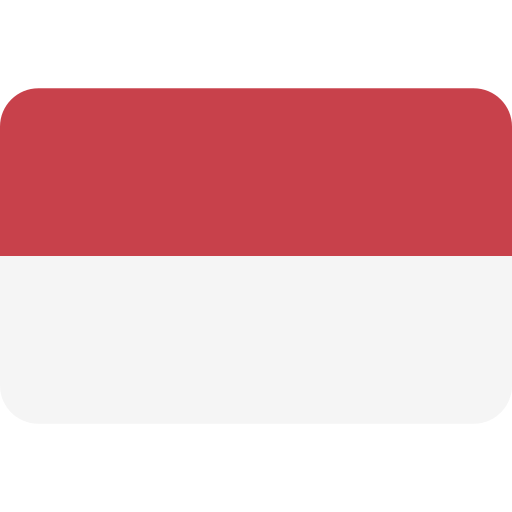INTRODUCTION
Indigofera has over 700 species. This plant originates from tropical regions in Africa, Asia, Australia, North and South America, and later spread to arid zones across Africa, Asia, and entered Indonesia around the 1900s. Agronomically, Indigofera species are leguminous plants tolerant of drought, perennial plants that can produce for up to 25 years. This forage plant is easy to develop and cultivate due to its high reproductive potential for producing pods and seeds.
Indigofera is a highly promising plant as a source of quality livestock feed due to its high protein and energy content that supports increased ruminant livestock productivity in various agroecosystems.
In addition to being a source of livestock feed, Indigofera has multiple uses. It's a source of blue dye for fabrics, traditional medicine, antimicrobials, green manure in paddy-based farming systems, and ground cover. The plant can be categorized as an herbaceous type (Indigofera spicata, Indigofera astragalina) or shrub/tree type (Indigofera tinctoria, Indigofera natalensis, Indigofera australis). Propagation can be done through seeds or cuttings, depending on the species. Propagation through seeds is relatively easy; species that can be propagated by both seeds and cuttings include Indigofera picata and Indigofera arrecta, while Indigofera suffructicosa and Indigofera hirsuta can be propagated by cuttings.
CHARACTERISTICS OF INDIGOFERA SP
- Alternate leaves, usually odd-pinnate,
- Flowers arranged in clusters,
- Sepals are five-toothed, petals are butterfly-shaped.
- Fruits are pods, straight or curved, containing 1 to 20 round to oval seeds.
- Epigeal germination with thick, quickly detached seed coats.
- Has taproot.
NUTRITIONAL CONTENT OF INDIGOFERA SP
- Dry Matter 21.97%
- Ash 6.41%
- Protein 27.60% - 31%
- Neutral Detergent Fiber (NDF) 44.69%
- Acid Detergent Fiber (ADF) 35.24%
- Calcium (Ca) 1.16%
- Phosphorus (P) 0.26%
- Gross Energy 4.038 kcal/kg
- Dry Matter Digestibility (DMD) 67.50%
- Organic Matter Digestibility (OMD) 60.32%
The content of harmful substances for livestock, namely tannins and saponins, is relatively low (tannin 0.08% and saponin 0.41%). No harmful substances like tri-nitro propionate were detected.
Indigofera sp has the following advantages:
- Easy to grow and care for, tolerant to extreme soil conditions such as drought, waterlogging, and salinity, making it a year-round feed source.
- No chemical use in cultivation, improves soil nutrients, and controls erosion.
- Meets criteria for good, continuous, and affordable livestock feed.
- Several research findings show that consumption by livestock provides:
a. High digestibility (77%);
b. Relatively odor-free pens and drier waste, reducing methane emissions;
c. Healthier and higher-quality products;
d. Improved weight gain, reproductive performance, sperm quality, milk production, and reduced mortality in rabbits;
e. Low cholesterol products, high Conjugated Linoleic Acid content;
f. Higher marbling scores and reduced subcutaneous fat;
g. In poultry, thicker egg yolks, antioxidants, and albumin;
h. High-quality compost.
Cultivation of Indigofera Plants
1. Plant Propagation can be done in two ways:
- Generative propagation: using seeds and mature plants around 12 months old. When sown, they should be placed in a shaded area until they reach a height of +30 cm.
- Vegetative propagation: using the best-growing branches, especially from productive plants. Cuttings should be long (+30 cm) and allowed to rest for 1 - 3 days in a shaded or cool place before planting.
2. Land Preparation
a. Soil tillage
b. Basic fertilization: 10 kg/ha solid organic fertilizer, 250 kg/ha soil treatment, and 200 kg/ha macro-fertilizers (urea, ZA, TSP, KCl, dolomite) in a 3:4:1:3:3 ratio.
3. Planting
a. Plant spacing: Rows spaced 75 cm apart and 50 cm within the row.
b. Vegetative cuttings should be about 8 months old.
c. Generative plant material should be sown in a nursery for 4 - 6 weeks before being transplanted to the field.
d. Seedlings are placed in shaded areas for optimal growth.
1. Maintenance
a. Weeding before fertilization.
b. Subsequent fertilization:
– Second fertilization at 3 weeks with 100 kg/ha.
– Third fertilization at 8 weeks with 80 kg/ha.
– Fourth fertilization at 12 weeks with 80 kg/ha.
Fertilizers used are urea, ZA, TSP, and KCl in a 3:4:1:3 ratio, and solid organic fertilizer is given at 20 kg/ha for 5 subsequent fertilizations.
2. Harvesting
Indigofera sp plants are ready for harvest at 240 days after planting for the first harvest, then subsequent harvests can be done every 60 - 90 days. Harvesting involves cutting the plant from the stem to the leaves, leaving the lower stem for regrowth. Indigofera plants can live up to 3 years.
Harvesting periods for Indigofera sp are as follows:
1. First harvest: 8 months
2. Harvest interval: 60 - 90 days
3. Cutting height: 1.0 - 1.5 meters above ground level
4. Feeding quantity: 1 - 2 kg/head/day
Processed Products of Indigofera into Livestock Feed
Green Indigofera sp forage can be used as raw material for green feed (organic products), serving as a primary protein source for livestock feed. Post-harvest processing involves drying using drying equipment or manual sun drying, followed by chopping using a chopper machine powered by a gasoline or diesel engine with steel blades. This is followed by milling using a diskmils or hammer mills system. Subsequently, the processed product can be turned into green concentrate or forage wafers.



